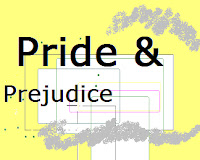The Domestic Novel and Themes of Jane Austen's "Pride and Prejudice"
Introduction
Jane Austen's domestic novels are renowned for their intricate exploration of everyday life. With a keen eye for satire, Austen exposes the attitudes prevalent in the rural middle and upper-middle classes. In Pride and Prejudice, she centers the story on the Bennett sisters, delving into their domestic lives and aspirations. Elizabeth, Jane, and their siblings navigate the complexities of love, societal expectations, and personal growth. Austen's insightful portrayal of the Bennett family offers a captivating glimpse into the ordinary yet captivating world of the middle class, making Pride and Prejudice a timeless masterpiece.
Domestic Life: Exploring Jane Austen's Pride and Prejudice
Jane Austen’s novels have rightly been called domestic novels. For one thing, 'She never goes out of the parlor' and chooses to work with two or three families in a small village as her source material. Thus, in Pride and Prejudice, she primarily delves into the domestic life and aspirations of the Bennet family, with some focus on the Lees as well. These are ordinary middle-class people with nothing extraordinary or exceptional about them. The novel satirizes the attitudes of the rural middle and upper-middle classes. Austen centers her story around the Bennett daughters: Elizabeth, Jane, and Lydia. Elizabeth, a spirited girl, holds a 'prejudice' against the wealthy landowner Fitzwilliam Darcy, scorning his lofty attitudes and pride. In the first excerpt, Darcy visits Elizabeth and her friend Charlotte under the mistaken belief that all the ladies of the house are present. In the second excerpt, Elizabeth accuses Darcy of sabotaging her sister Jane's engagement to Bingley, Jane's fiancé. However, upon receiving a letter of explanation from Darcy, Elizabeth recognizes the errors in her judgment and discovers faults in her own nature. Thus, the action revolves around the everyday occurrences of visits, dinners, and occasional balls. However, such is the art of the novelist that even this homely material is treated dramatically and made gripping, capturing our interest.
The Husband Hunt: Unraveling the Drama of Pride and Prejudice
The central theme of Pride and Prejudice the husband hunting campaign of Mrs. Benet and Mrs. Lucas, the mother of marriageable daughters. The action centers round their efforts to secure suitable husbands for their daughters, and out of this simple theme the novelist weaves a drama of the highest order.
There arise stress and strains and conflicts which give roe to pathos, to tragedy, and to comedy of the highest order. And within that drama involve Darcy-Elizabeth main plot, Jane-Bingley sub plot, Lydia-Wickham episode and Collins -charlotte’s episode. We find the clash of pride but in the course of the novel, the folly both of pride and prejudice has been exposed, and as a result shored off.
There arise stress and strains and conflicts which give roe to pathos, to tragedy, and to comedy of the highest order. And within that drama involve Darcy-Elizabeth main plot, Jane-Bingley sub plot, Lydia-Wickham episode and Collins -charlotte’s episode. We find the clash of pride but in the course of the novel, the folly both of pride and prejudice has been exposed, and as a result shored off.
The Clash of Pride and the Exposure of Folly
In Pride and Prejudice, the clash of pride creates a tumultuous landscape, revealing the inherent folly within characters. The story is fraught with stress, strains, and conflicts that test relationships to their limits. Through this emotional journey, pathos, tragedy, and comedy intertwine, offering a multifaceted exploration of human experiences. As the plot unfolds, the novel masterfully exposes the folly of pride and prejudice, shedding light on the flaws that hinder genuine connections and understanding. In this captivating tale, Jane Austen skillfully highlights the consequences of unchecked pride, inviting readers to reflect on their own biases and discover the transformative power of humility and open-mindedness.
Elevating the Everyday: Austen's Artistry
Austen's artistry lies in her ability to elevate the ordinary aspects of everyday life into gripping drama. Through her skillful storytelling, common exchanges, simple dinners, and even the occasional ball become captivating moments. She weaves the fabric of ordinary lives with such finesse that the readers are drawn into the intricacies of the characters' experiences. With her keen observations and wit, Austen transforms the mundane into something extraordinary, capturing the essence of human nature and societal dynamics. In this way, she creates a world where even the homeliest of matters hold the power to engage and enthrall.
Conclusion
Pride and Prejudice stands as a remarkable novel of the highest caliber. Through its exploration of domestic life, marriage, and societal critique, Jane Austen weaves a captivating tale. The journey of the characters reveals profound reflections and personal growth, as they confront their pride and prejudices. With its timeless themes and intricate storytelling, this novel continues to resonate with readers, offering valuable insights into human nature and the complexities of relationships. Pride and Prejudice remains a testament to Austen's exceptional ability to craft engaging narratives that delve into the depths of the ordinary, leaving a lasting impact on literature and our understanding of ourselves.
Answer the Questions-
- Comment on the title of the novel?
- What is the limitation of Jane Austen as a novelist?
- What kind of person is Mary Bennet, the middle daughter? What makes her unique in the family? Can she be considered a satirical character? Why or why not?
- What is Mr. Collins's main motive for getting married?
- When Charlotte accepts Mr. Collins's proposal, Elizabeth is shocked and angry. Why?
Reference
1.Pride and prejudice : Austen, Jane, 1775-1817 : Free Download, Borrow, and Streaming : Internet Archive. (n.d.). Internet Archive. https://archive.org/details/prideprejudice00aust



Comments
Post a Comment
Drop any query, suggestion or comment here.